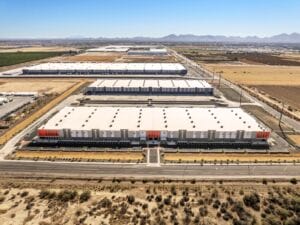With the desire by many Arizona residents to experience a more urban lifestyle, the repurposing of commercial buildings/areas has become very popular over the last seven years. These projects can thrive as evidenced in Phoenix by the Seventh Street Corridor, Roosevelt Row, and ASU’s downtown campus, but it is important to note that real estate development involving repurposing requires thorough due diligence, significant time, and a relatively large scope of review.

The good news is that most of the due diligence items to be considered are common to any real estate project. The bad news is that the failure to investigate and evaluate the risks might leave an investor with limited prospects for salvaging the initial investment.
If redevelopment will be pursued by a prospective purchaser, great care is required to identify and assess risks. Some of the key issues to address include:
Title Review: Reviewing the title, including an ALTA/NSPS survey is essential. Obtaining title insurance in the amount of the purchase may not adequately address the scope of the risk, where the “fully developed” value is projected to be worth more than the cost of the land. (Consider obtaining “subsequent issuance” endorsements.) Potential problems include covenants of record, access issues, easements, and use restrictions, architectural approvals, or other burdens, including sharing of amenities, including parking, with third parties.
Zoning and Entitlements: The regulatory powers of the local municipality must be vetted. Even with the support of a project by city staff, the neighbors may have an opportunity to intervene. Zoning and building codes will control all aspects of a development, including the use, architectural guidelines, density, access, parking and landscaping. Decisions regarding whether to demolish and reconstruct or to scrape and build could be swayed based on grandfathering of non-conforming uses, applicable fees, and rights of neighbors to object.
Offsite Infrastructure: Great care is required where a repurposed use will result in a different impact on the offsite services (e.g., utilities, traffic, drainage, etc.). There is no shortcut to engaging civil engineers to thoroughly evaluate the requirements for the repurposed project, and the capacity of the “in place” improvements, or alternatively, the determination of any necessary additional offsite improvements.
Environmental: “Legacy” projects often have legacy problems, whether in the form of asbestos, underground storage tanks, chemical residue from agricultural uses, or even septic tanks. The environmental consultant will need to review the historical use of the property, as far back in time as possible, regardless of the applicable ASTM standard.
With 30 years of experience, attorney James B. Connor is a Shareholder with Gallagher & Kennedy, P.A. He practices corporate finance and real estate law, representing local and national real estate developers, lenders and investors with commercial real estate matters including apartments, industrial, office and retail projects, master planned communities and shopping centers. Jim may be reached at jbc@gknet.com or 602-530-8524.




